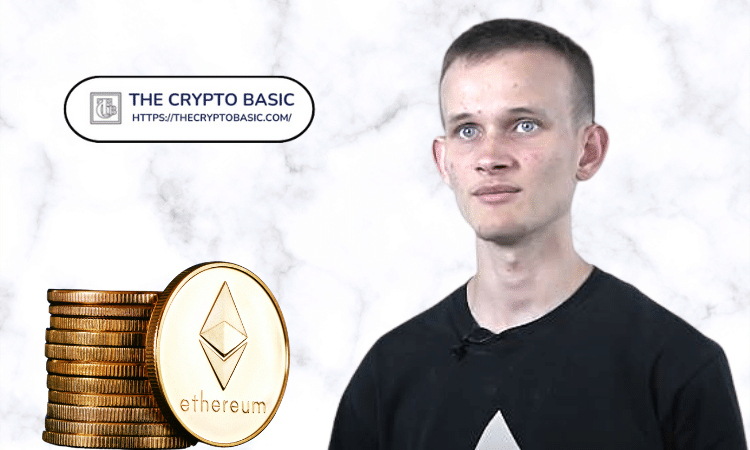Ethereum co-founder Vitalik Buterin presents his vision for the future at the 10th Global Blockchain Summit.
Ethereum co-founder Vitalik Buterin reveals his vision for the future at the 10th Global Blockchain Summit October 17, 2024 – Shanghai, China – The long-awaited 10th edition hosted by Wanxiang Blockchain Lab The Global Blockchain Summit will open with a keynote speech from Ethereum co-founder Vitalik Buterin. .
Buterin reflected on Ethereum's evolution since its creation, shared insights on the platform's progress, and laid out an ambitious roadmap for its future.
One of the key takeaways from his speech was that Ethereum uses Layer 2 (L2) technology to exceed 100,000 transactions per second (TPS) and reduce cross-chain transaction times to just 2 seconds. was the goal.
Ethereum’s 10-year journey
In his speech, Buterin talked about Ethereum's history since its early days. Founded in 2015, Ethereum has evolved from a new blockchain platform to a powerful decentralized network that supports decentralized finance (DeFi), non-fungible tokens (NFTs), and a variety of other blockchain-based applications. I have grown.
https://x.com/thecryptabasic

“If you've heard my talks in 2015, 2016 or 2017, you'll notice that not much has changed,” Buterin said. “Our main goal has always been to improve Ethereum technology.
In 2022, we completed a complete transition from Proof of Work (PoW) to Proof of Stake (PoS),” he continued, reflecting on the pivotal changes in the platform. He highlighted how the core areas of scalability, privacy, zero-knowledge proofs, and security have been at the forefront of Ethereum's development over the past decade.
Achieving scalability: The road to 100,000 TPS
One of the main highlights of Buterin's speech was Ethereum's ambitious plans to achieve over 100,000 TPS using L2 solutions.
He noted that progress has already been made in reducing transaction costs and increasing confirmation speeds as important steps towards achieving this goal.
Ethereum's L2 solution has brought transaction fees down significantly from the extremely high levels seen in 2020 and 2021. At the time, Layer 1 trading fees ranged from $5 to $10, and Buterin himself recalls paying up to $800 for a single trade.
“By 2022 and 2023, L2 solutions are coming out that have significantly reduced rates,” Buterin said. “Transaction fees have gone from $0.20 to $0.01, which is very important for many applications.” These L2 solutions are based on Ethereum's recently introduced EIP-4844, which provides more data space in L2. Combined with this, it puts Ethereum in a position to meet the demand for mass adoption.
Cross-chain transfers in 2 seconds: A unified user experience
In addition to improving scalability, Buterin outlined Ethereum's vision to enhance cross-chain interoperability. “Our goal is to achieve cross-chain transfers between Ethereum and other blockchains in less than two seconds,” he explained. This provides users with a more seamless and unified experience, allowing them to transfer assets and data between chains quickly and efficiently.
User experience and global adoption
Buterin also touched on Ethereum's efforts to improve its user interface, a key element in making decentralized applications (dApps) more accessible to the general public. Since 2015, Ethereum’s user interface has evolved dramatically.
In countries with advanced digital currency adoption, such as Argentina and Turkey, Ethereum is focused on improving the user experience to encourage broader use of dApps. Buterin emphasized that “more than 10% of the population in these countries own digital currencies,” and that a smooth, user-friendly experience is essential to transitioning these users to a decentralized system. suggested.
Cross-chain security priorities
While the Ethereum Virtual Machine (EVM) remains important to the platform's infrastructure, Buterin emphasized that the future focus will increasingly shift to cross-chain security.
As Ethereum expands and integrates with other blockchains, ensuring secure cross-chain interactions will be essential to the platform's long-term success. “Cross-chain security is becoming more important than EVM,” Buterin said, highlighting the growing scope and complexity of Ethereum’s infrastructure.
Ethereum aims to build a more resilient and interconnected blockchain ecosystem by prioritizing security between different blockchains.
The next chapter of Ethereum
As Ethereum looks to the future, Buterin's vision is clear. Achieving massive scalability, improving cross-chain transfers, enhancing user experience, and ensuring cross-chain security are central to Ethereum development.
The continued expansion of this platform is setting the stage for it to remain a dominant player in the blockchain space. With these advances, Ethereum is positioning itself not only as a leader in decentralized finance, but also as a force behind next-generation blockchain innovation.
Disclaimer: This content is informational and should not be considered financial advice. The views expressed in this article may include the personal opinions of the author and do not reflect the opinions of The Crypto Basic. We encourage our readers to conduct thorough research before making any investment decisions. Crypto Basic is not responsible for any financial losses.

